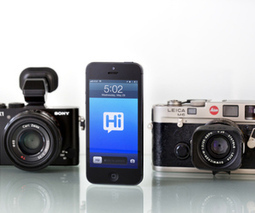I am a professional commercial photographer. I have been for the last 25 years.
Throughout most of my career, I’ve had a hard time taking personal pictures — and for years I thought that shooting film was to blame.
I’ve always found shooting film nerve-wracking. The joy of the “latent image” isn’t quite so joyous when you’re wondering if the shots are actually going to come out. And it got steadily worse: The more experienced I became, the more I realized what could go wrong. The nerves were always there — occasionally with very good reason. The biggest thrill I got from a roll of processed film was the thrill of relief.
It’s difficult to explain these nerves to those who have only shot digitally. It seems to me that most of the millennial generation views shooting film as exciting and pure, like vinyl records or artisanal coffee. But trust me, it’s not: You don’t get sued if you scratch the vinyl, or destroy your reputation if you spill the cappuccino. Shooting with film is like flying at night. You have to completely trust your instruments: Your light meter is your life, and there’s often no second chance.
............
The iPhone was a “revolutionary mobile phone” and a “breakthrough internet communications device” — with a camera. It was certainly not the first phone to have a camera — and it probably wasn't even the best camera available in a phone at the time — but it certainly was the best camera in my phone. As soon as I used it, I felt a genuine, relaxed enthusiasm for taking pictures that I hadn’t felt for years.
The iPhone’s crappy 2-megapixel camera removed all of the normal concerns over image quality. Resolution, exposure, and color saturation were all uniformly terrible, but what did it matter because I was shooting on a phone... a phone! It was fun.



 Your new post is loading...
Your new post is loading...







